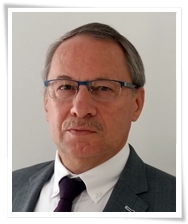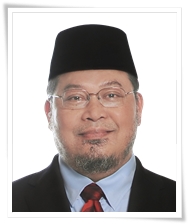KEYNOTE SPEAKERS | PLENARY SPEAKERS | INVITED SPEAKERS | INDUSTRIAL TALK
 |
PROF. DR. KOJI KATO
Past, Present and Future of Tribology in Japan Lubrication
technology was rapidly developed during the time of
Industrial revolution (1750~1850) in England and Europe. It
was introduced to Japan after the opening of the country in
1867, and Japanese industries of tribo-materials,
tribo-elements, and tribo-systems grew up quickly together
with the growth of other heavy industries. Japanese Society
of Lubrication Engineers (JSLE) was founded in 1956 when the
Group of Lubrication and Wear was formed in IMechE. JSLE
changed its name to Japanese Society of Tribologists (JAST)
in 1989 when Japanese GNI exceeded that of USA. Through the
period, Japanese bearing companies such as NSK and NTN
formed the top group of bearing companies in the world.
JAST organized its 8th International Tribology Conference -
Tokyo in 2015, 4th WTC – Kyoto in 2009 and 3rd Asiatrib –
Kanazawa in 2006. The contribution to the science and
technology of tribology in Japan gradually became obvious in
the last 30 years. The ceramic ball bearings were first
produced successfully by a Japanese company. The DLC coating
method was quickly developed and introduced into various
tribo-elements in Japan. The super high speed train,
Shinkan-sen, continued to increase its speed with the
advanced tribo-technologies. The concept of super lubricity
was first introduced in Japan and attractive data have been
reported.The future of tribology in Japan will be discussed
with the recognition of such history of tribological
achievements. |
|
|
PROF. DR. MICHEL FILLON
Short Biography
Past, Present and Future of Hydrodynamic Lubrication Although the problems on Tribology have been known since millenniums, the studies on friction started only after the 16th century by the works of Leonardo da Vinci. Later on, the bases of the lubrication theory have been initiated by other famous researchers like Beauchamp Tower and Osborne Reynolds. The thermal effects in journal bearings have been known since 1854 with the works of Hirn, but it wasn’t until a century later, in 1962, that the thermohydrodynamic lubrication theory was presented by Dowson. Since this time, the thermal effects combined with the mechanical and thermal deformations of the bearing elements were of a great interest in hydrodynamic bearings operating in laminar and non-laminar regimes. Moreover, the mixed lubrication regime can be the result of downsizing in order to reduce power losses. During the last fifty years, the evolution of tilting-pad journal and thrust bearings has led to enhance their performance: these bearings are nowadays widely used in many applications. Nowadays, several ways of friction reduction in hydrodynamic bearings are investigated: low viscosity lubricants, composite or polymer materials and surface texturing. |
|
|
PROF. IR. DR. MASJUKI HASSAN
Short Biography
Thirty Years of Tribology in Malaysia: Research Gap Between North and South Research work in the field of tribology is relatively new in Malaysia compared to the advanced countries of the world. Introduction of tribology as an important field of engineering in Malaysian universities and industries was quite difficult. Recently tribologists in Malaysia have focused on green tribology, tribology of waste materials, surface and coatings technology and bio-mimetics. In 2007, Malaysian tribologists from Leeds University, UK laid the foundation of MYTRIBOS. MYTRIBOS was formed to properly promote the practice, research and development related to the field of tribology in Malaysia and to facilitate collaborations between academia and industry in all possible endeavors. MYTRIBOS eventual vision and mission is to help reduce energy consumption by making machineries more energy efficient in order to reduce greenhouse gas emission and to make industries more economically profitable. It has more than 100 active members around the world. Several regional and international conferences have been held by MYTRIBOS in order to promote global networking. Participants in these conferences were from developed countries. Through the efforts of MYTRIBOS, tribology has been introduced as a subject in public and private universities in Malaysia. There is a major gap in the tribological research work between north and south. The collaboration among northern and southern tribologists can reduce the environmental pollution and energy consumption in this region. Extensive funding is required by Malaysian tribologists in order to acquire research equipment, consumables and organize tribological conferences. These conferences will highlight the importance and applications for future tribological research. These necessary steps should be taken for bridging the research gap between north and south. |
| ASIATRIB2018 | All Right Reserved |




